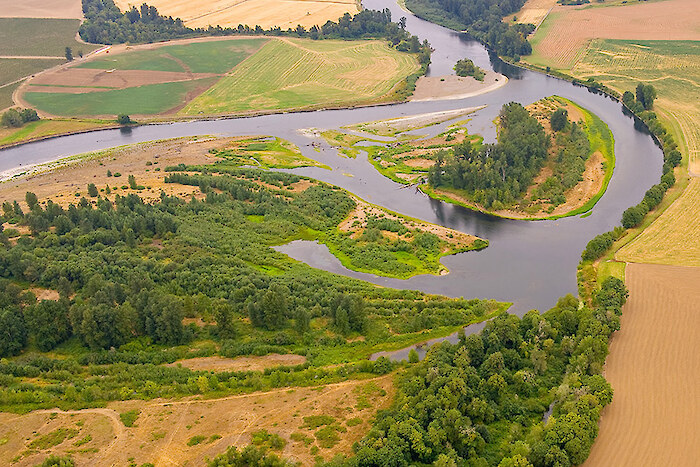
Years of reduced peak flows as well as reduced flooding due to dam building in the Willamette River basin have caused a reduction in channel complexity of the Willamette River and its tributaries. The more complex a streams channel is (i.e., the existence of logs, many channels and pools, and a winding path), the higher ability the stream has to hold a healthy fish population. Streams are often straightened and simplified when they become urbanized and this along with reduced peak flows often decreases channel complexity, as it has in the Willamette River Basin.
This indicator measures the amount of in-stream habitat as measured by channel complexity.
